Swimsuit Buying Guide for Lifeguards
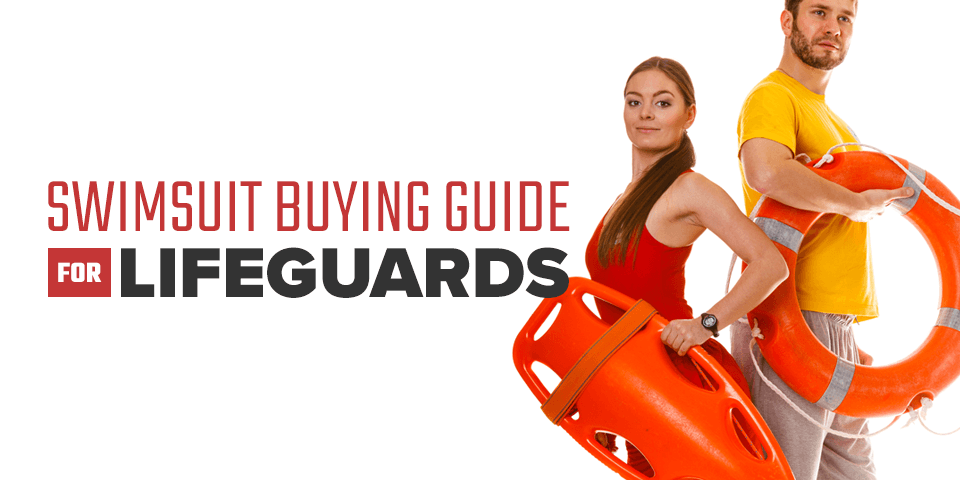
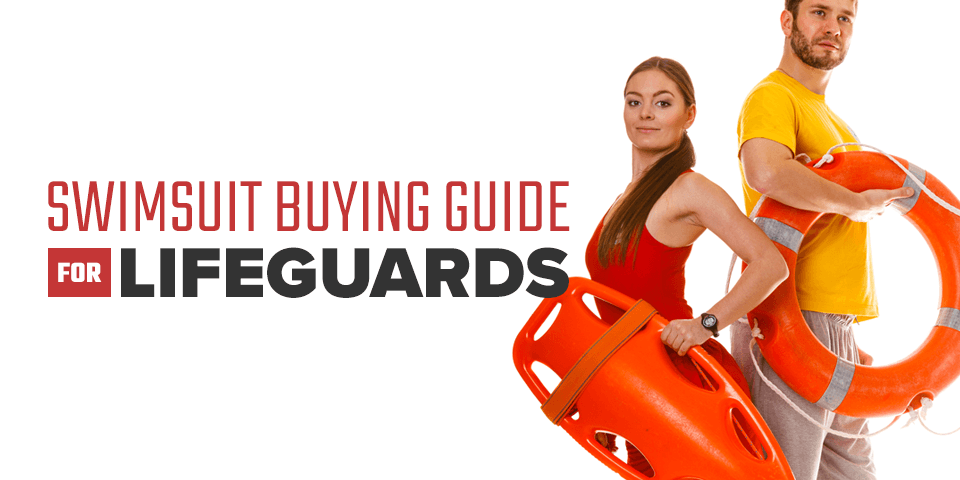
Trained lifeguards save lives. In fact, the chances of drowning at a beach staffed by lifeguards could be less than one in 18 million. Lifeguards undergo rigorous training to watch the water and swimmers and dive in when someone needs help. While that training is the most significant part of what makes lifeguards so good at their job, their gear is another critical factor. Lifeguards need the right swimwear to keep them comfortable and ready to take action at any moment. If you are training to become a lifeguard or you already work as one, use this lifeguard swimsuit buying guide to make sure you have the right swimwear for the job.
What to Look for When Choosing a Lifeguard Swimsuit
Lifeguard swimsuits, unlike swimsuits worn for sunbathing or casual swimming, are more about function than fashion. When you're a lifeguard, you need to wear swimsuits that help you perform your duties while staying comfortable and withstanding daily wear and tear. Finding the best suits for your job can sometimes be challenging with so many options, but knowing what to look for can make the process easier.
Look for these important features when buying lifeguard swimsuits.
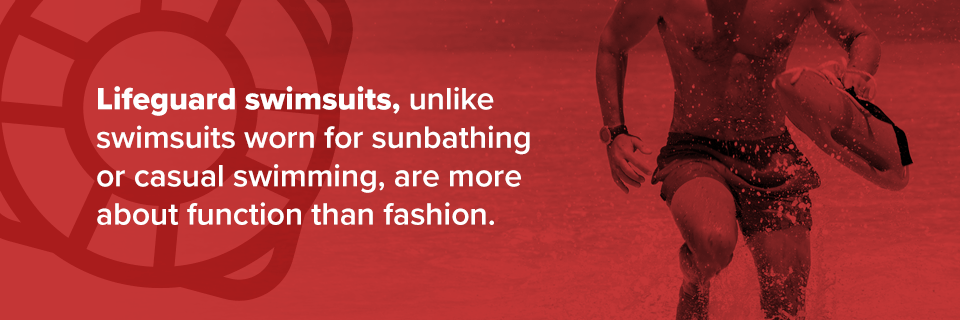
1. Durability
If you are wondering how to choose a lifeguard suit, the best place to start is by thinking about durability. If you lifeguard at a beach, you will be spending hours out in the sun, sand and water — fresh or salt. If you lifeguard at an outdoor pool, you'll be spending hours in the sun and chlorinated water. Chlorine is the primary concern for lifeguards at indoor pools. Getting in the water so often means the material of your swimsuit will begin to fade and stretch. This is inevitable, but you want to select an option that will last longer with the proper care. No matter the environment, your swimwear is going to need to be tough to endure. In addition to lasting through all of the exposure to water, sun and chemicals, your suit will need to have quality stitching and stretch to ensure it does not wear out due to the frequent use. You will pull your swimsuit on and off every time you work. You will need to wash it after every use. The suit needs to be durable enough to handle that. You do not want to select a suit that will need to be replaced after only a few months of work.
2. Comfort
Some swimsuits look fantastic but do not feel very comfortable. This is not what you want for lifeguarding duty. Lifeguarding swimwear tends to be different than casual swimwear and competitive swimwear primarily because of comfort. But, what feels comfortable is entirely up to you. When you first put on the swimsuit, it should feel like a second skin. A suit that feels itchy, does not quite fit your shape or just does not feel right will be a distraction. You are going to be in that swimsuit for your entire shift, so you want to know your swimwear will feel right. Note, the swimsuit should feel comfortable either wet or dry. It is likely during the course of the day you will be in and out of the water. Your suit is going to go from dry, to wet, to damp and back again. You should not feel uncomfortable or restricted in any way.
3. Proper Fit
Lifeguarding is an active job. You will be required to move on a regular basis. In case of an emergency, you will need to move quickly. With this kind of physical demand, you do not want to be hampered by your swimsuit. Though you may be required to be on the move at a moment's notice, lifeguarding also requires a certain amount of sitting or standing still. Is the suit comfortable enough to sit or stand in for long periods? A swimsuit that is too small will make you uncomfortable, while a swimsuit that is too large will hamper your movement through the water. Always determine your proper fit before buying a swimsuit. Next, consider how the fit of the swimsuit will change over time. Some suits will stretch out with repeated use, while others have fabric that will expand or shrink in the water. You do not want to be stuck with a suit that fits fine on the first use but becomes too big or too small after you wear it on the job.
Paying attention to the fit of your swimsuit can help you find convenient styles that meet all your needs. Additionally, you can save time and money because properly fitted swimsuits often last longer, which means you won't need to buy new ones every couple of months.
4. Dress Code
The pool or beach you work at may have a dress code, which could dictate the style, color and even brand of the swimsuit you wear while you are on duty. Dress codes may seem limiting, but pools and beaches put them in place for a reason. A uniform look for all lifeguards can create a more professional image, and it can also help swimmers easily recognize you as a lifeguard.
Employers may require a specific color to improve visibility. Red, a color often associated with lifeguards, makes you stand out in a crowd. Your employer may require you to wear red lifeguard swimsuits to help distinguish you as a lifeguard at your work. Dress codes will likely prohibit translucent and revealing suits too. Check with your employer before picking out your new lifeguard swimwear.
Although you want to keep these considerations in mind when picking out your lifeguard swimwear, you still have plenty of freedom to choose the brand and style that you like. Companies like Nike, Adidas, Dolphin, RISE Aquatics, Speedo, TYR and YMCA make swimwear specifically for lifeguards. Within each of those brands, you will find a variety of colors, sizes and styles to match what you are looking for in your swimwear. You can also look for features like resistance to sun and chlorine.
Tips for Women Choosing a Lifeguard Swimsuit
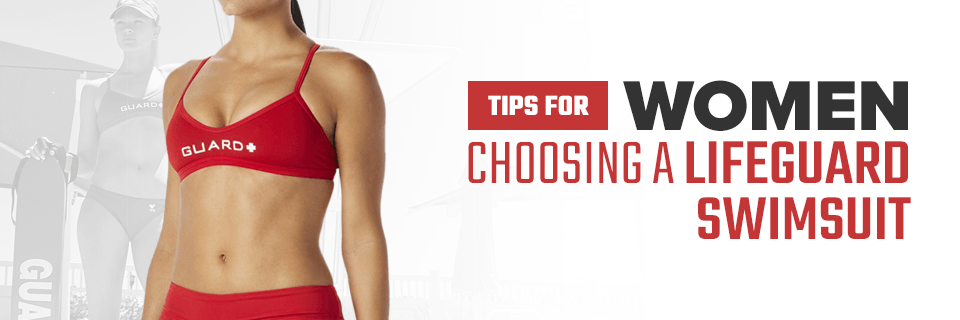
Women’s lifeguard swimwear comes in so many different shapes and styles that it can be easy to get confused. If you are a female lifeguard, understanding the style and fabric options will help you decide. Here are a couple of components to consider when looking for a women's lifeguard swimsuit.
1. Choosing a Style
The three main style choices for women's swimwear are one-piece, bikini and tankini. A one-piece suit covers your entire torso, but there still variation within this style. The neckline, cut of the bottom and cut of the back of the suit can be different. The neckline can be fashioned with a scoop neck, a v-neck, a square-neck, a halter neck, a high neck, a keyhole neck or be completely strapless. One-piece suits can also come with half- or full-length sleeves. The bottom styles of one-piece suits vary based on how much coverage they provide.
The three main style choices for women’s swimwear are one-piece, bikini and tankini. A one-piece suit covers your entire torso, but there is still variation within this style. The neckline, cut of the bottom and cut of the back of the suit can be different. The neckline can be fashioned with a scoop neck, a v-neck, a square-neck, a halter neck, a high neck, a keyhole neck or be completely strapless. One-piece suits can also come with half- or full-length sleeves. The bottom styles of one-piece suits vary based on how much coverage they provide.
When it comes to bikinis, there is a lot of variation in the style of both the top and bottom pieces. Some of the most common bikini top styles include triangle, bandeau, halter and underwire. Bikini bottom styles include hipster, boy short, skirt, string, high-waisted and cheeky. You can mix and match the top and bottom styles that are most comfortable for you. Tankinis are a bathing suit style that is a blend of a one-piece and bikini. This style offers the full coverage of a one-piece but comes in two separate pieces like a bikini.
Another style factor to consider is if the swimsuit is reversible. Many lifeguard swimsuits nowadays are reversible, having two different colors on each side. Having a swimsuit with two wearable sides offers more options. Sometimes, double-sided swimsuits are also more durable because they have extra fabric.
The available options give the wearer a lot of freedom to explore different cuts and colors. As a lifeguard, you want to keep in mind that your swimsuit will be the central part of your workwear, which means you want it to help you do your job, not hinder it. While your employer likely will have the final say over the style of swimsuit you can wear, you can still discover suits that meet your preferences. You can find a lifeguard swimsuit that suits your style and keeps you comfortable while fulfilling your employer's dress code.
No matter the style you choose, always check that it is made to last, fits you well and feels comfortable when you wear it. Lastly, double-check your workplace’s dress code to make sure your choice meets all criteria.
2. Choosing a Fabric
Within each different style of swimwear, you will also find different types of fabric. The fabric you select can play a significant role in how long your suit lasts and how comfortable you feel while wearing it.
A nylon blend is the most common fabric used in women's swimwear. The blend is usually 80 percent nylon and 20 percent of a stretchy material like spandex. Swimsuits made with a nylon blend will typically perform well in the comfort category. The material is stretchy and soft, so it conforms to your body without feeling itchy. The fabric also dries pretty quickly, which is a major benefit for lifeguards who spend a lot of time getting in and out of the water. Swimsuits with this type of material are only sometimes UV-resistant and are usually not chlorine-resistant. These can be downsides for lifeguards. The suit may not last as long because you will regularly expose it to sun and chlorine.
Swimsuits can also be made with a polyester blend. This type of fabric is more often used in competitive swimwear. Swimsuits made of this material will be a little less stretchy, but they will dry faster and have resistance to UV rays and chlorine.
Less common materials used to make swimsuits include neoprene and knit fabric. Neoprene is most often found in wetsuits used for divining. This material offers more water resistance and insulation. Knit fabrics are often used in fashionable swimwear that is better suited to sunbathing than active swimming. Lifeguards will likely want to choose a suit made from either a nylon or polyester blend.
Here are some examples of swimsuits designed for female lifeguards:
- YMCA Instructor MB Back: This one-piece swimsuit is a blend of 91 percent polyester and 9 percent spandex. The suit is designed to withstand body heat, chlorine, salt and sunscreen. The design is simple and comfortable.
- Nike Women's Performance Guard Top: This Nike bikini is designed to allow the wearer maximum range of motion, a major benefit for on-duty lifeguards. The swimsuit material is stretchy and chlorine-resistant.
- TYR Tri-Color Guard H-Back Tankini Set: This TYR tankini offers full coverage. The swimsuit is made of 80 percent nylon and 20 percent Lycra, a branded name for spandex. The swimsuit is both UV- and chlorine-resistant.
Choose a swimsuit style and fabric that is most comfortable and convenient for you. Suits with added UV and chlorine resistance can help you further protect against the sun and pool chemicals. The resistance also ensures you can wear the swimsuits for a longer time before they discolor or wear out from daily wear and tear.
Tips for Men Choosing a Lifeguard Swimsuit
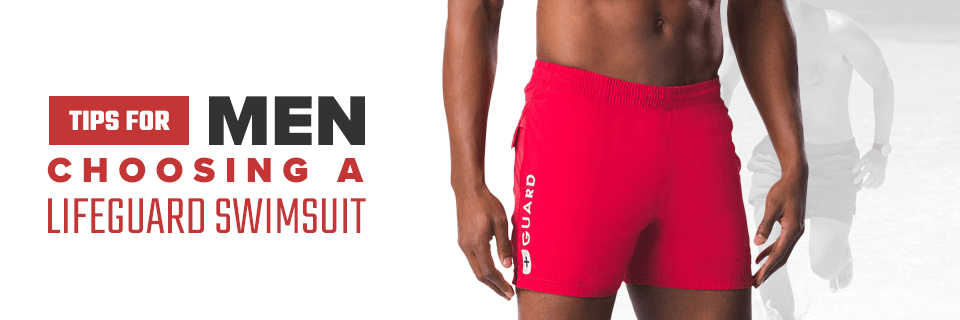
Men's lifeguard swimwear has plenty of variety. Just like women's lifeguard swimwear, it is important to think about the available styles and fabrics.
1. Choosing a Style
Traditional men's swimwear is usually just a pair of bottoms. Different bottom styles include trunks, boardshorts, briefs, jammers and square leg. Trunks are one of the most common types of swimwear. These bottoms typically cover the wearer from the waist to the mid-thigh. The fit is relaxed. Boardshorts fit just like swim trunks, but they fall below the knee.
Swim briefs are often referred to as speedos. This style of suit has a tight fit that leaves both legs exposed. Swim jammers are typically worn by competitive swimmers. This style hugs the wearer with snug fit from the waist to mid-thigh. Square leg swimsuits look similar to boxer brief underwear. They have a tight fit and cover just the upper portion of the thighs.
When you are considering different style options, take into consideration your comfort, the suit's durability, proper sizing and your employer's dress code. Lifeguards need freedom of movement, so you'll want to choose a swimwear style that does not weigh you down with too much loose fabric. If your swimwear has pockets, make sure they are made of mesh or have drainage holes to ensure you aren't weighed down while you are in the water.
Men also have the option to wear swimsuit tops, usually referred to as rashguards. This type of swimwear offers upper body coverage, which can protect you during long days in the sun. Rashguards can be either short-sleeve of long-sleeve. They can be worn in the water like any other type of swimwear. As with swimwear bottoms, you want to ensure a comfortable fit and adherence with dress code policy.
2. Choosing a Fabric
Men's swimwear is usually made of the same variety of fabrics used in women's swimwear. Swim trunks and boardshorts do not need to be stretchy given their loose fit. Brief, jammer and square leg swimsuits will be made with more stretch because of their tighter fit. When selecting a fabric, look for options like nylon blend and polyester blend. Each of these fabric types is commonly used in men's swimwear.
Since you'll frequently be in and out of the water, consider finding swim bottoms with materials that dry quickly. Wearing soaking-wet clothes can become uncomfortable after a while. With shorts and tops that dry fast, you can stay comfortable throughout your shift, no matter how many times you have to jump in the water.
Here are a few examples of swimwear designed for male lifeguards:
- Speedo Guard 14″ Volley Short: These nylon volley shorts have sun protection, side pockets, a mesh lining and a drawstring waistband. This suit has a shorter and snugger fit.
- YMCA Boardshort: These boardshorts are 100 percent polyester with longer coverage in the leg and a slightly more relaxed fit. This swimsuit also has a boxer-style, polyester mesh liner.
- YMCA Instructor Long Sleeve Rashguard: This swimwear top is made of 82 percent nylon and 18 percent spandex. It offers chlorine and sun resistance.
- YMCA Instructor Short Sleeve Rashguard: This short-sleeved swimwear top is also made of 82 percent nylon and 18 percent spandex with sun and chlorine resistance.
You can complete your lifeguarding job without worrying about your uniform when you have a swimsuit that meets your comfort preferences while enhancing your performance capabilities. As long as you comply with your workplace's dress code, deciding the style and fabric for your swimsuit is ultimately up to you.
Find Your Suit at the Lifeguard Store
When you are ready to buy a lifeguard swimsuit, browse the hundreds of options for men and women at The Lifeguard Store. When you find the right swimsuit, you can feel confident that you are prepared to be on the job each and every day.



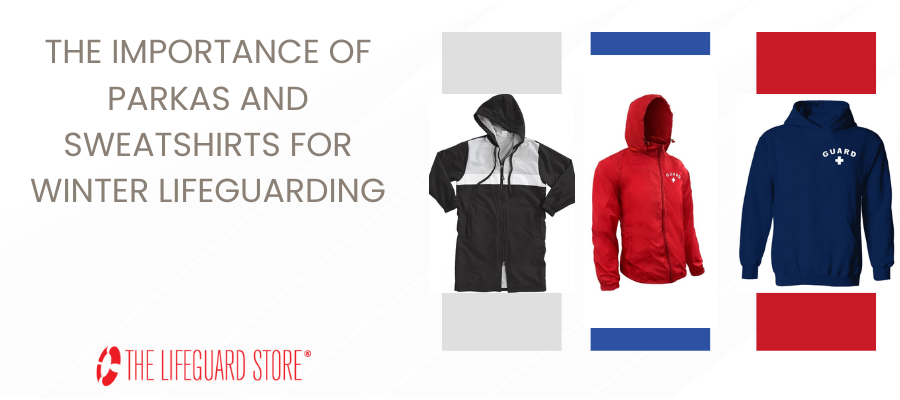
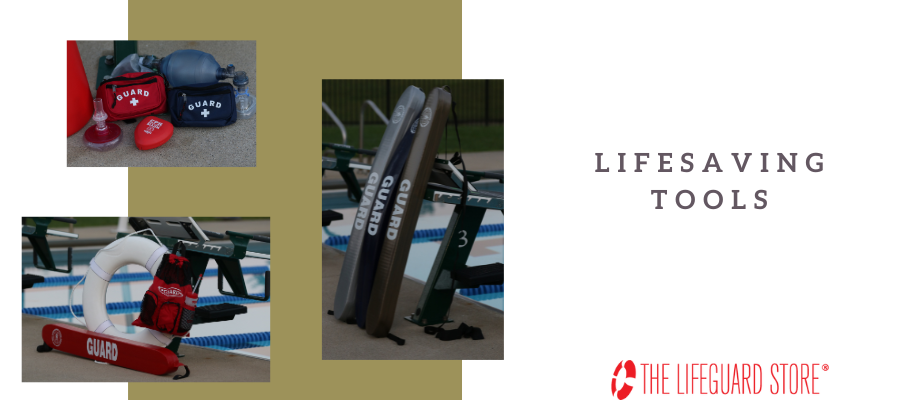
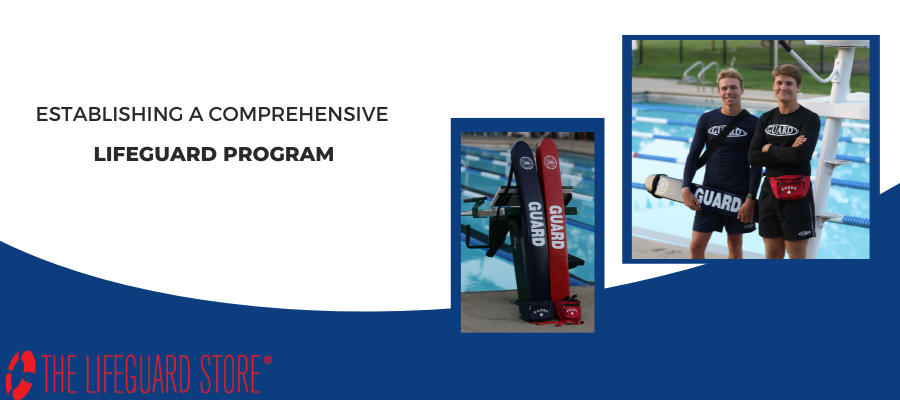
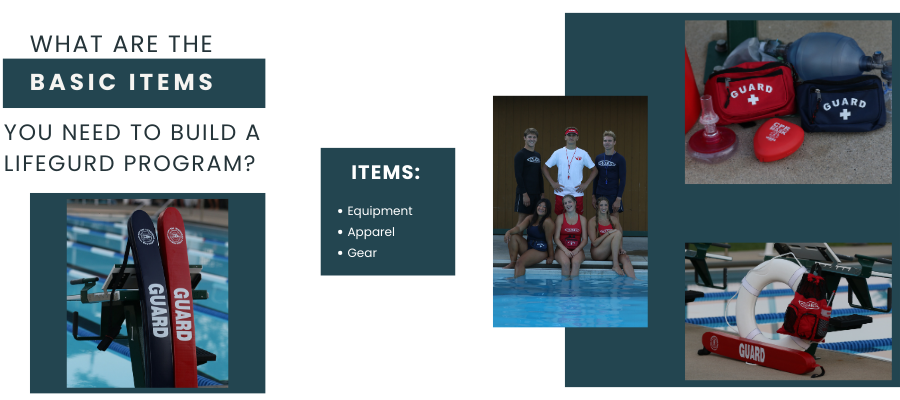
Leave a Comment
Your email address will not be published. Required fields are marked *